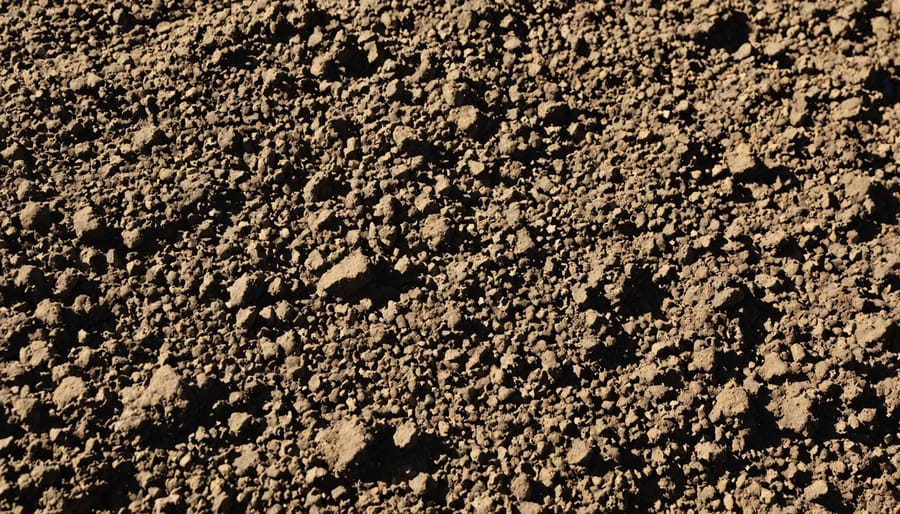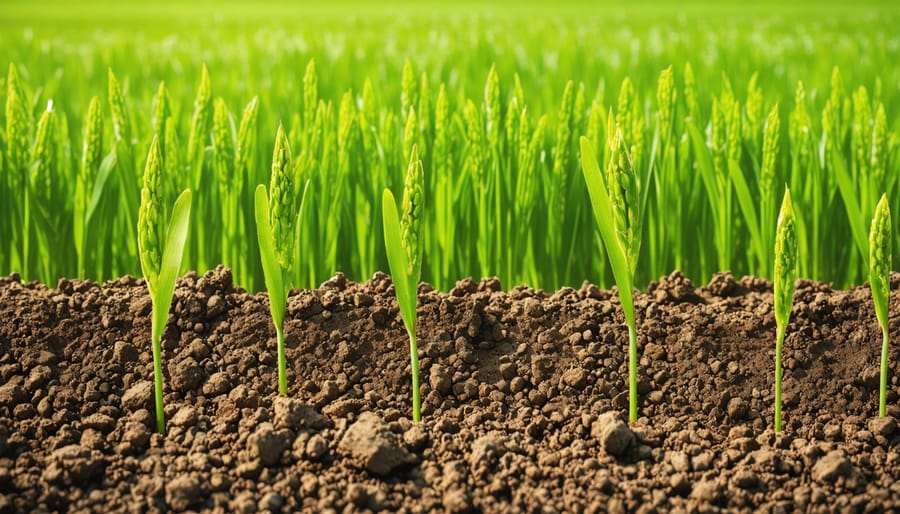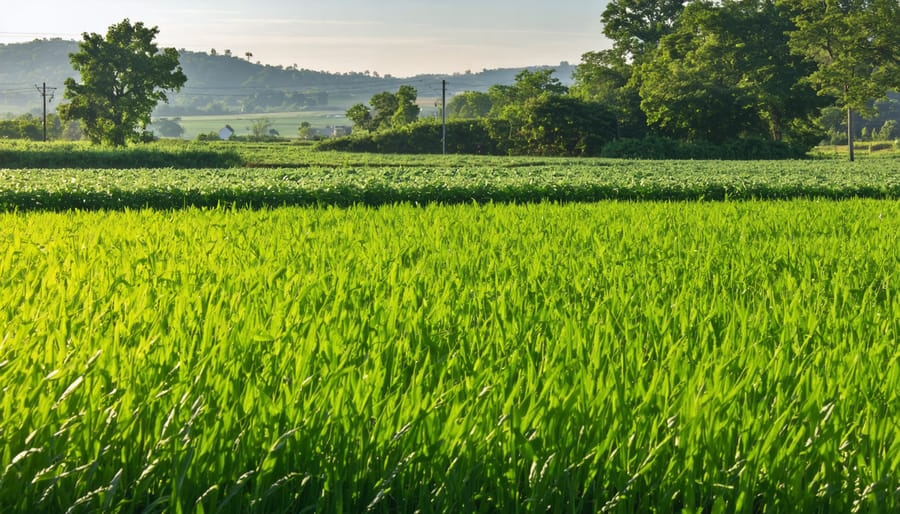Transform your farmland into a powerful carbon sink through regenerative farming practices that boost soil health while fighting climate change. Plant cover crops between growing seasons to capture atmospheric carbon and enhance soil structure. Minimize tillage operations to prevent stored carbon from escaping while protecting valuable soil microorganisms. Integrate livestock through rotational grazing to naturally fertilize fields and accelerate carbon sequestration.
Modern agriculture holds immense potential for mitigating climate change – studies show that improved farming practices could sequester up to 10% of current global carbon emissions. By adopting these methods, farmers don’t just reduce their carbon footprint – they create resilient, productive landscapes that generate higher yields and healthier crops. The solution to climate change might just lie beneath our feet, in the rich, living soil that sustains us all.
The Soil-Carbon Connection

Understanding Your Soil’s Carbon Storage Potential
Different soil types have varying abilities to store carbon, making it essential to understand your land’s potential. Sandy soils typically have lower carbon storage capacity, while clay-rich soils can hold significantly more. The key to maximizing your soil’s carbon sequestration lies in its organic matter content and biological activity.
Healthy soils rich in organic matter can transform your farmland into thriving ecosystems capable of storing impressive amounts of carbon. Dark-colored soils usually indicate higher organic matter content and better carbon storage potential. You can assess your soil’s current state through simple tests like the jar test for texture and checking its color and smell.
The good news is that regardless of your soil type, you can enhance its carbon storage capacity. Adding compost, practicing minimal tillage, and maintaining year-round plant cover helps build organic matter. Local farmer Sarah Thompson improved her sandy loam soil’s carbon content by 2% over five years through consistent application of these practices, proving that with proper management, any soil can become a better carbon sink.
Simple Carbon-Storing Farming Practices
No-Till Farming Benefits
No-till farming is revolutionizing how we think about soil care and carbon storage in agriculture. Instead of traditional plowing, this approach leaves the soil undisturbed, creating a natural environment where organic matter can accumulate and thrive. When farmers skip tilling, they help enhance soil health while keeping carbon locked safely in the ground.
The benefits are impressive: reduced erosion, better water retention, and improved soil structure. Plant roots and beneficial organisms create natural pathways in the soil, leading to better drainage and aeration. This intact soil ecosystem becomes a powerful carbon sink, storing more atmospheric carbon dioxide than regularly tilled fields.
Local farmer Sarah Martinez switched to no-till five years ago and noticed dramatic improvements: “My soil holds moisture better during dry spells, and I’ve seen more earthworms than ever before. Plus, I’m spending less time and fuel on field preparation.”
No-till farming also supports beneficial microorganisms and fungi networks that help plants access nutrients more effectively. These underground communities play a crucial role in carbon sequestration while building long-term soil fertility.

Cover Cropping Strategies
Cover crops are nature’s carbon-capturing champions, working tirelessly to lock atmospheric carbon into the soil while protecting and enriching farmland. These helpful plants are grown during off-seasons when fields would typically lie bare, creating a win-win situation for both farmers and the environment.
Popular cover crop choices include legumes like clover and vetch, which not only sequester carbon but also fix nitrogen in the soil. Cereal rye and winter wheat excel at developing extensive root systems that help build soil organic matter, while buckwheat and mustard rapidly produce biomass above ground.
Local farmer Sarah Martinez shares her success story: “Since implementing cover crops three years ago, we’ve noticed darker, richer soil and improved water retention. Our soil tests show significantly higher carbon content, and our vegetable yields have increased by 15%.”
To maximize carbon sequestration benefits, consider these practical tips:
– Plant cover crops immediately after harvest
– Use diverse species mixtures
– Allow crops to grow as long as possible before termination
– Minimize soil disturbance when terminating crops
– Incorporate residue into the soil rather than removing it

Real Success Stories from Local Farms
Meet Sarah and Tom from Sunrise Valley Farm, who transformed their 20-acre plot into a carbon-capturing powerhouse. By implementing no-till farming and maintaining year-round cover crops, they’ve increased their soil organic matter by 2% in just three years while boosting their vegetable yields by 30%.
In the Pacific Northwest, Green Meadows CSA has become a model for successful carbon sequestration. Owner Maria Rodriguez combines rotational grazing with diverse perennial plantings. Her soil tests show a remarkable increase in carbon content, and her farm now sequesters an estimated 5 tons of carbon per acre annually.
The Johnson Family Farm in Vermont proves that small changes add up to big impacts. Their transition to regenerative practices, including composting and agroforestry, has not only improved soil health but also reduced their irrigation needs by 40%. They’ve created a thriving ecosystem where beneficial insects flourish, naturally controlling pests while building soil organic matter.
These success stories demonstrate that carbon sequestration practices not only benefit the environment but also lead to more resilient and profitable farming operations.
Carbon sequestration in agriculture offers a powerful solution for combating climate change while improving soil health and farm productivity. By implementing practices like cover cropping, no-till farming, and agroforestry, farmers and gardeners can actively contribute to reducing atmospheric carbon dioxide while building more resilient agricultural systems.
The benefits extend beyond environmental impact – improved soil structure, increased water retention, and enhanced biodiversity create more productive and sustainable farming operations. Even small-scale gardeners can make a difference by adopting these practices in their backyard plots.
As we face growing environmental challenges, every effort to sequester carbon counts. Whether you’re managing acres of farmland or tending a small garden, consider implementing these carbon-smart practices. Together, we can cultivate a healthier planet while growing abundant, nutritious food for our communities.

